Quick Answer: The ideal session length for red light therapy typically ranges from 5 to 30 minutes, depending on factors such as the device type, targeted body area, user’s age, health condition, and experience with the therapy. Beginners should start with shorter sessions (5–10 minutes) and gradually increase duration as needed.
Red light therapy (RLT) has gained significant attention in recent years for its purported benefits, ranging from skin rejuvenation to pain management and muscle recovery. An essential aspect of red light therapy application is to determine the best duration for its use regarding safety and comfort while providing maximum benefits.
What is the duration of a red light therapy session that would give the best results? The answer lies in the fact that it depends on various factors: mechanism of action, environment, device type, age, and physical condition of the beginner, targeted area of the body, and familiarity of this individual with the method.

How Does Red Light Therapy Work?
Mechanism of Action
In general, red light therapy utilizes low-energy wavelengths (about 650-850 nm) to penetrate the dermis and trigger cellular interactions. The main working principle of red therapy on the body is photobiomodulation (PBM): Reflection of red and near-infrared light on cells of the body for mimicking repair. After absorption of the wavelengths, the mitochondria increase the production of ATP, to improve cellular functions, collagen production, tissue repair, and anti-inflammatory effects.
Biological Effects
Effects of red light vary as per intensities and exposure times. These include the following effects:
- Reduced Inflammation: RLT has been found to help modulate the immune system and, as a result, reduce inflammation within injury or chronic condition-affected areas of the body.
- Relief from Pain: RLT increases blood flow and decreases inflammation, leading to reduced pain in ailments like arthritis, tendonitis, and muscle soreness.
- Improving Skin Health: RLT has also been known to enhance the production of skin collagen, even to the extent where fine wrinkles disappear from the skin, with enhanced skin brightness, thus replenishing the melatonin so greatly desired.
- Quicker Healing: RLT also stimulates the regeneration of cells in individuals who have suffered injuries or undergone surgery.

Usage Environment
The environment can affect the length of time needed for a red light therapy session. There are differences in-home use and professional settings, and many environmental factors affect patient comfort at treatment.
Home Use vs. Professional Settings
At home, users get flexibility in terms of how often and how long they do the therapy session. Usually, a red light therapy session will last from 15 to 30 minutes, depending on the type of device used and the level of effect needed. You can have amazing flexibility at home in terms of tailoring sessions according to your needs and comfort.
In professional settings, generally, the length of a session might be longer than in other settings due to a more common structured treatment plan. Progress is monitored by a therapist or clinician and is measured through the response to the therapy. These sessions are usually more targeted and may include a higher intensity of light.
Ambient Conditions
Other variants influencing comfort during therapy are room temperature, lighting, and noise levels. For example, a warm, quiet environment would result in enhanced relaxation, making it easier to facilitate a longer session. As opposed to noisy or cold room environments, a shorter, more settled session can be more comfortable to end. A good environment will ensure the efficacy and enjoyment of therapy.
Device Type
In addition to the type of red light therapy device, the length of time that is needed to have a session is determined based on the device that will be used.
Handheld Devices
Handheld devices are more portable and are normally kept at home for smaller areas like the face, joints, or targeted muscle groups. Mostly, sessions with a handheld device normally last from 5 to 10 minutes and are dependent on the target area and the device's power output.
Full-Body Panels
Full-body panels, on the other hand, cover larger regions, which typically require longer sessions. Devices like this emit more light and their larger surface area permits quicker treatment across the whole body. Sessions involving full-body panels typically take 15-30 minutes, depending on the intensity of the device and the body part involved.
Age
Factors such as age also influence the duration of red light therapy sessions. The healing and recovery time after performing the therapy in younger individuals is faster than in older ones.
Young Adults
For young adults with no underlying health conditions, shorter sessions of 15 to 25 minutes are generally effective and enough for general wellness, skin health, and muscle recovery. These sessions can be repeated regularly, but there’s no need for extended durations to reap the benefits.
Older Adults
For older adults, the recovery process takes longer, and in some cases, they are more affected by chronic illness, such as arthritis, which lasts long and cannot be helped with therapy alone. Generally, for this patient class, the therapy bringing relief from pain and stimulating tissue regeneration requires 15 to 30 minutes of session time.
Physical health
Body Conditions
A longer and more frequent exposure to treatment may be necessary for patients suffering from arthritis, tendonitis, or fibromyalgia. A pain-reducing, inflammation-alleviating, and healing-promoting 15- to 30-minute exposure per session may be especially beneficial for this group. Severe chronic pain typically requires daily therapy or, depending on patient response, intense multi-week therapy or multiple sessions each week.
General Wellness
For people using red-light therapy for overall wellness, like lifting moods or boosting energy, or improving their glowing skin, the length of time can be reduced in short-form treatment sessions of 10 to 15 minutes in one sitting.
Body Parts
Thinner Skin Areas
Light-absorbing by the skin is typically faster on facial surfaces as compared to the rest of the body; therefore, treatments usually take short intervals (5 to 10 minutes). It doesn't take much light to penetrate and become absorbed by the deep layers in these smaller body parts.
Thicker Skin Areas
On the other hand, the back, thighs, and joints can take longer session durations because they are thick-skinned areas. Some of these places are denser and, therefore, may need more time to let light seep in sufficiently far to work therapeutically.
Proficiency
Beginner
Beginners should start with shorter sessions (5 to 10 minutes) to gauge their tolerance and response to red light therapy. As they become more accustomed to the treatment, they can gradually increase the duration based on personal comfort and effectiveness.
Experienced
The experienced user can have a longer session of 15–30 minutes, especially with larger body parts, tolerance, or specific health conditions to address.
Conclusion
The ideal question of how long a red light therapy session should be cannot be answered. It actually depends on the user, his or her age, proficiency with the therapy, the health status at their disposal, and body area. Usually, sessions are held at a minimum of 5 minutes to a maximum of approximately 30 minutes which a user can decide on as feasible within their schedule. The most important thing is to listen to your body and adjust the length of your sessions as necessary to ensure the safety and effectiveness of the practice. Numerous benefits can be derived from using red light therapy wisely, ranging from improving skin health to faster pain relief and better muscle recovery.
References
1. Glass GE. Photobiomodulation: The Clinical Applications of Low-Level Light Therapy. Aesthet Surg J. 2021 May 18;41(6):723-738. doi: 10.1093/asj/sjab025. Erratum in: Aesthet Surg J. 2022 Apr 12;42(5):566. https://pubmed.ncbi.nlm.nih.gov/33471046/
2. Foley J, Vasily DB, Bradle J, Rudio C, Calderhead RG. 830 nm light-emitting diode (led) phototherapy significantly reduced return-to-play in injured university athletes: a pilot study. Laser Ther. 2016 Mar 31;25(1):35-42. https://pmc.ncbi.nlm.nih.gov/articles/PMC4846838/
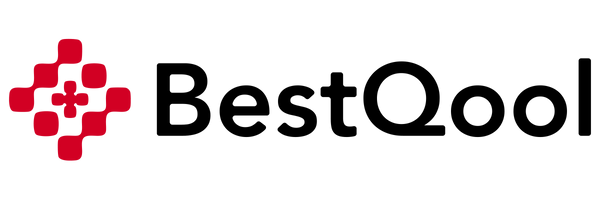


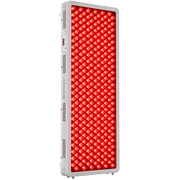
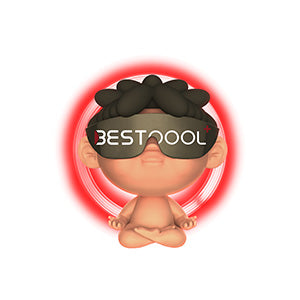








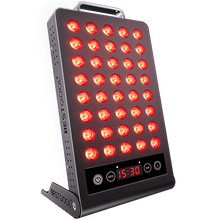
 Small
Small
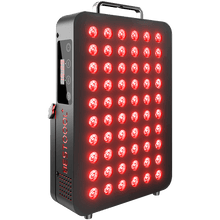
 Moderate
Moderate
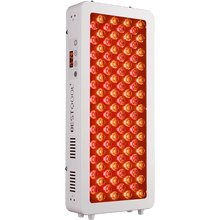
 Moderate
Moderate
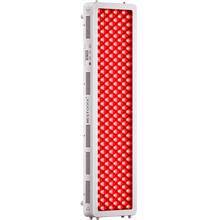
 Moderate
Moderate
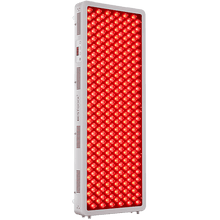
 Full
Full



